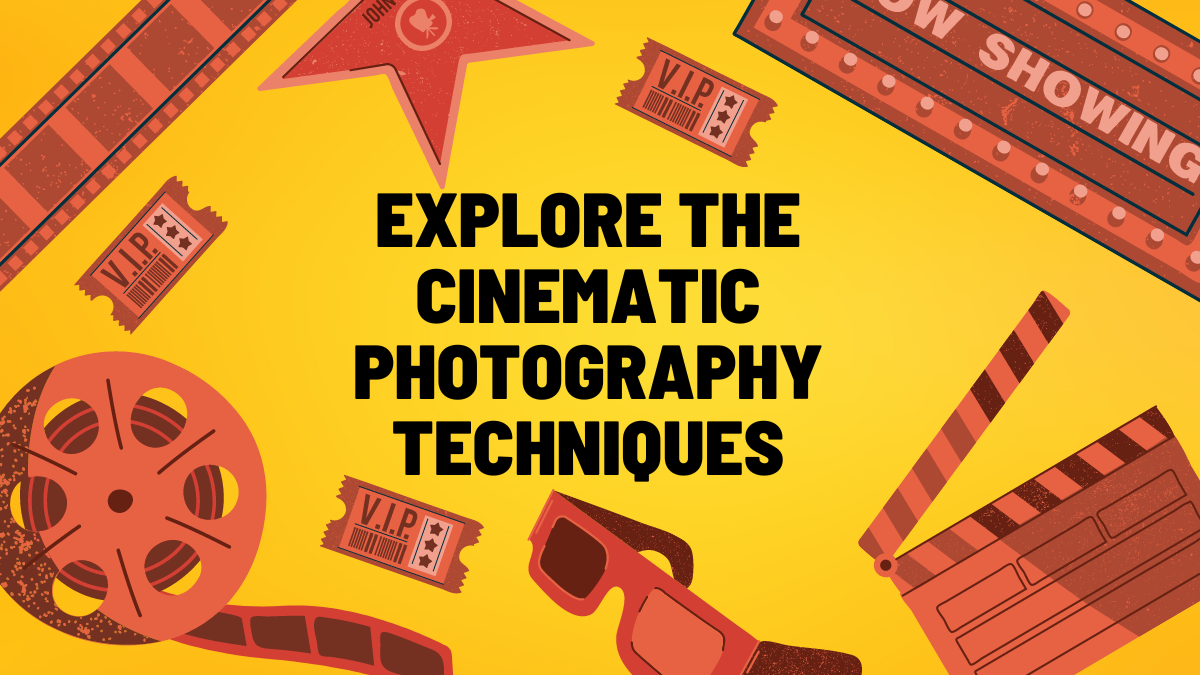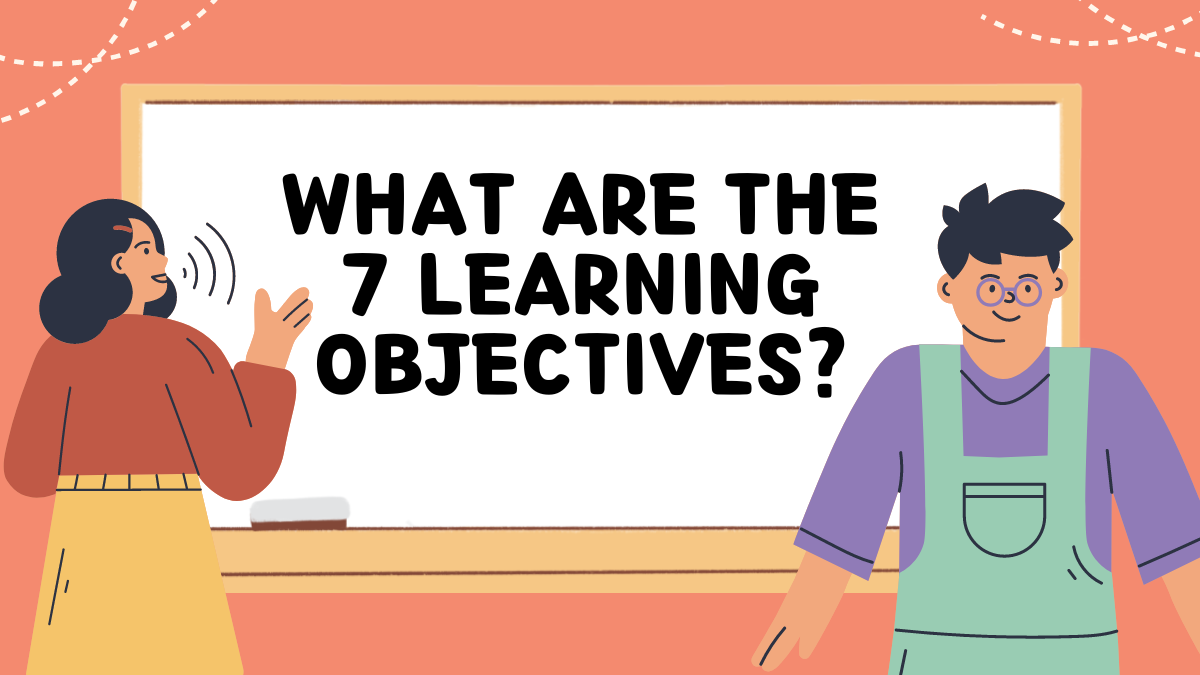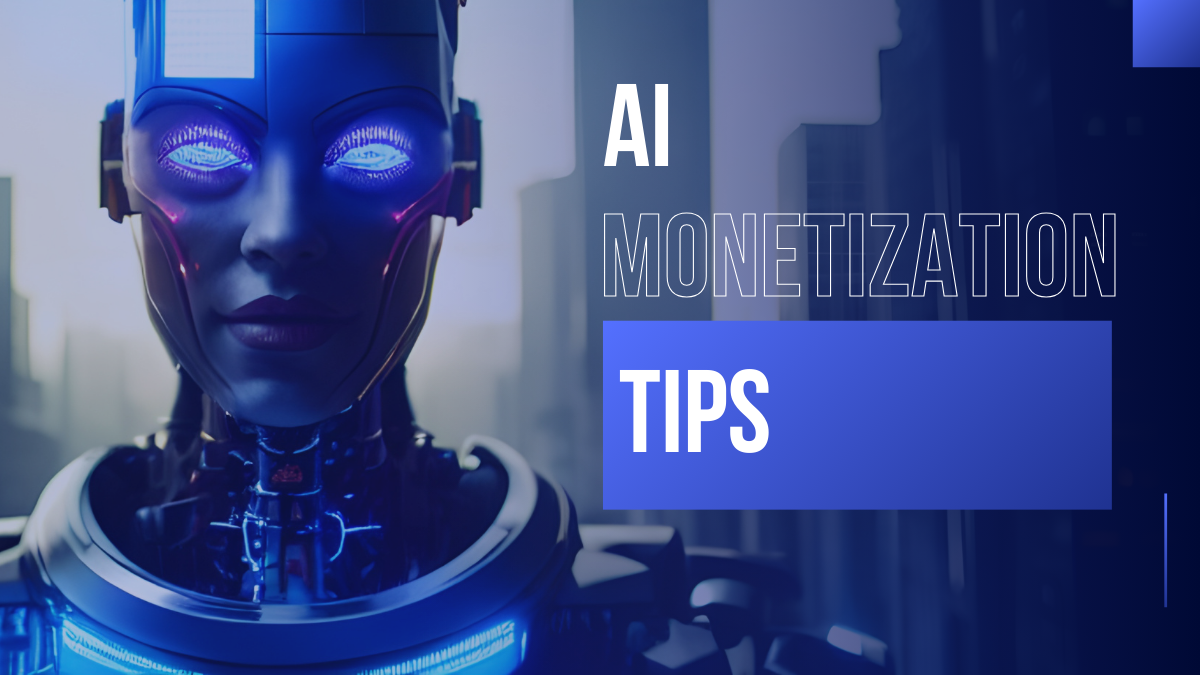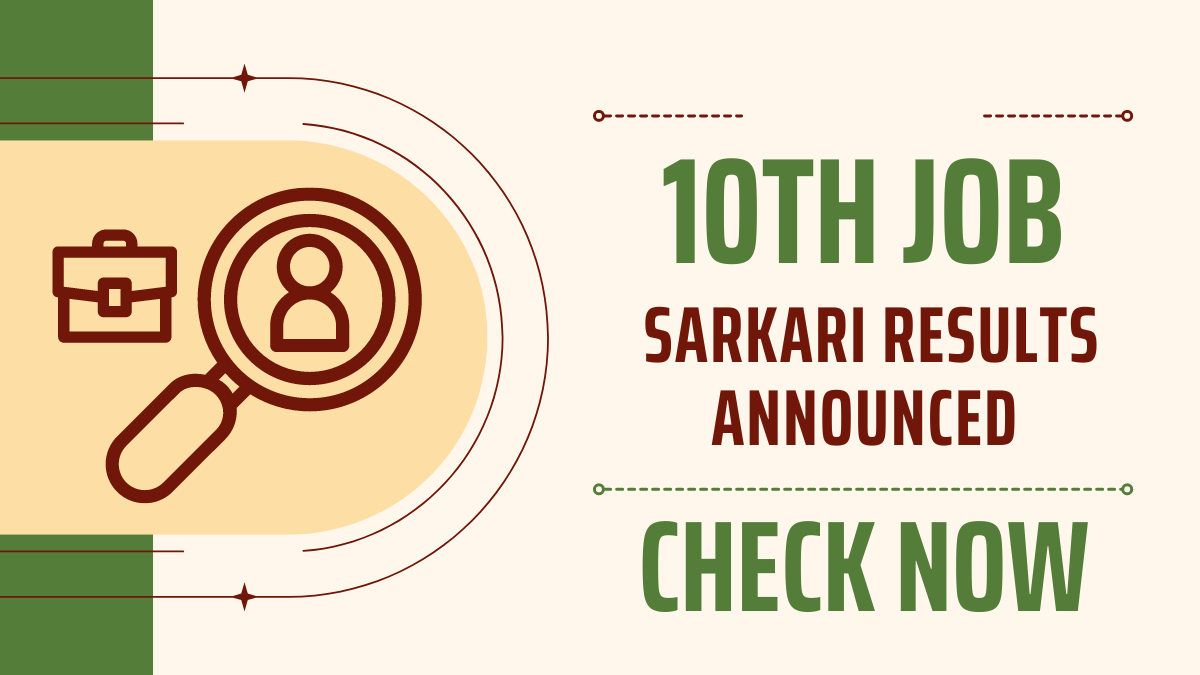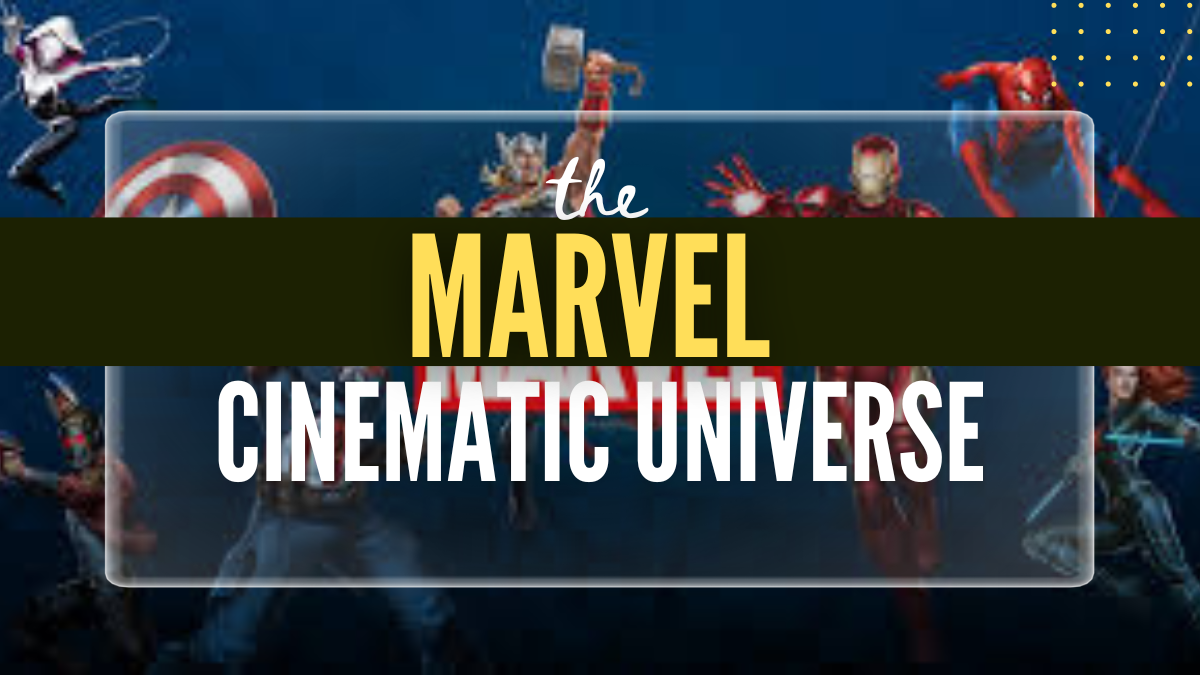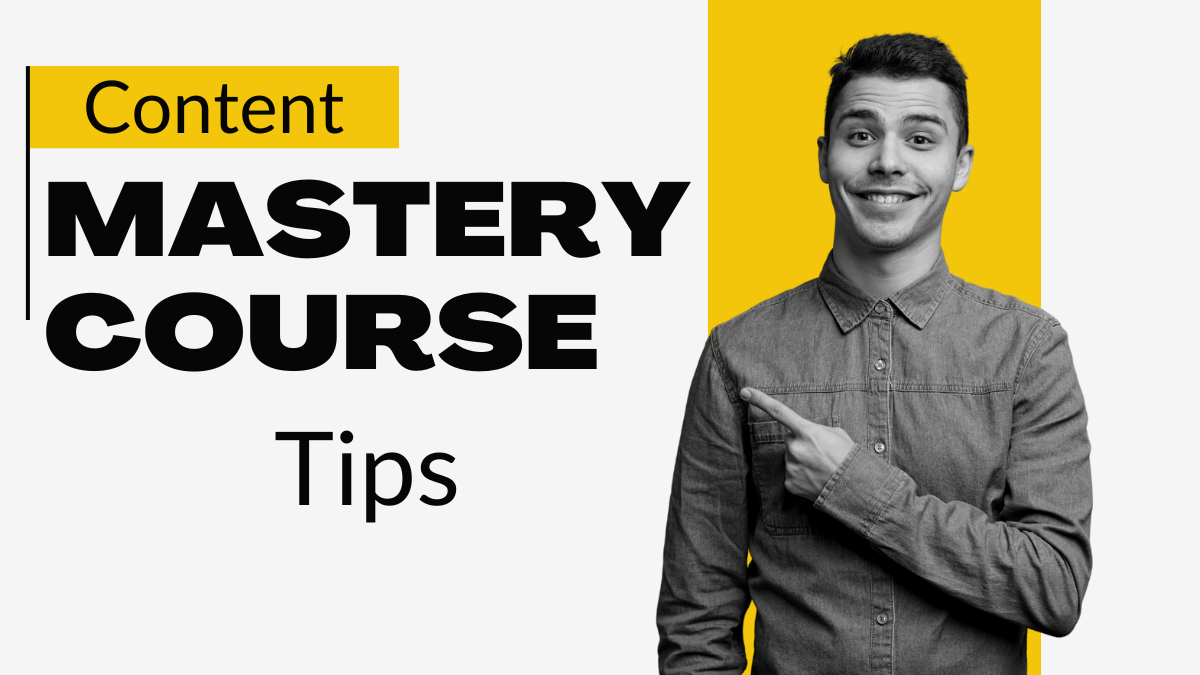
Introduction
Content Mastery Course In the modern world, it does not matter what background you have: it is the content that reigns. And the want to create, to curate, to manage content well is something that will serve you well in almost any job market. Regardless of your profession or business type – marketer, an entrepreneur, freelancer, content sharer – content creation skills should be mastered. This course, “Content Mastery Course”, aims at giving you the practical ammunition, the ideas and the techniques in the process of producing high-quality content that will draw the attention of the viewers, educates them and ultimately gets them to buy into the intended message.
Table of Contents
In the next few modules, we will discuss Content Mastery Course strategies in more detail, also, describe and analyse different forms of content and discover how to adapt content to given platform and target audience. At the end of this course, a learner will not only have the knowledge of creating content, but also implement it and create good content often.
Content Mastery Course is a fundamental concept that is understandable and easy to implement, mostly because it can easily be compared to a simple process of writing a text.
1. 1 What Exactly is Content Creation :- Content Mastery Course?
It is the Content Mastery Course of topics, ideas and material which you wish to disseminate to and which are appealing to your audience. These may encompass things such as creating an article or a video, drawing a graphic, recording a podcast, or other such things. The primary objective of content creating is to offer a utility of value to the targeted consumer base, in terms of knowledge or enjoyment.
1. 2 The Role of Content Mastery Course in Current Marketing
Information can be regarded as the very foundation of most of today’s popular tactics in marketing. Forcing the harried consumer even further thanks to digital media, it has never been more important to be noticed. High quality content assists business to create awareness, to gain the confidence of the customers and to capture the attention of the customers. It also supports and boost SEO (Search Engine Optimization), social media marketing, email marketing and other online marketing.
1. 3 Types of Content Mastery Course
It is imperative that one be able to differentiate various forms of Content Mastery Course in order for one to make good content plan. Here are some common types: Here are some common types:
• Blog Posts and Articles: Communications which offer value by offering information or opinion. They are perfect to optimize for SEO and to bring more traffic to your site.
• Videos: Viral and multi-purpose, videos can be used for captured tutorials, testimonials, service demonstrations and much more.
• Infographics: Charts and graphs to represent the information in a simple way with minimum efforts to understand the information put across in the form of representations.
• Podcasts: Audio material that enables series of discussions, interviews and storytelling.
• Social Media Posts: Instagram, twitter, and LinkedIn posts or any other content which can be shared in the social media platforms.
• eBooks and Whitepapers: A term in journalism that refers to analysis that goes beyond the surface to give more extensive coverage of the topic. These are usually employed as lead generation magnets.
• Webinars: Webinars that deliver content by either live or pre-recorded webinars which serve informative or discursive functions.
B Module 2 Content Mastery Course: Writing Engaging Information
2. 1 Audience Research
In other words, with the advent of Content Mastery Course strategies, you should always try to find out who will consume the content you produce. Audience research is the process of collecting information regarding the audiences that you want to target, their age, gender, preferences, concerns, and so on. This information will help you to optimize your content and see to it that your content is going to be well understood by your viewers.
• Content Mastery Course Audience Personas: Audience persona is a document that describes a typical customer or the target audience, and it is a mixture of assumption and research. It consist factors including; age, sex, position, hobby, and problems. Having personas allows one to respond to the needs and expectations of different groups of the audience.
2. 2 Ideation and Brainstorming
To write Content Mastery Course, coming up with ideas can be proved to be one of the most difficult tasks ever. However, what must be put into practice is how the formulation process can be made to reveal new ideas every time rather than settlings for repetitious ideas.
• Brainstorming Techniques: There are several techniques, which can assist in finding new approaches and perspectives to the content; those are mind maps, comparison of strengths, weaknesses, opportunities, and threats, and SCAMPER.
• Content Gaps: Find out what is missing in the content creation in your industry or sub niche. Search for gaps in knowledge that your audience may have that is yet to be filled or areas that the public has not been well informed on.
2. 3 Writing with Purpose
Content Mastery Course has to have a proper agenda, for example, to give information, entertain, to induce people to certain actions or to inspire. Knowing the reason behind the creation of your content will help determine the manner in which the information will be disseminated, and in what form.
• The Power of Storytelling: In content creation, among several techniques, storytelling is one of the greatest ways to go. It draws an interest from the target group of audience and elicits an emotional response thereby making your message to be more memorable.
• Crafting Headlines and Hooks: This is actually the first point of contact of the audience and therefore, it has to be compelling. Thus, using the strong headline in addition to a hook can make the difference in the probability of the content being read.
2. 4 SEO and Keywords Optimization
People do not simply type to seek information for it to be found online and thus this calls for Search Engine Optimization. Here are some of the basic areas under SEO that are used in optimizing your content to rank well on SERPs.
• Keyword Research: Begin by determining what keywords and phrases your target audience is utilizing. Most tools like Google Keyword Planner, SEMrush and Ahrefs will assist you to identify these keywords.
• On-Page SEO: Be sure to use your keywords seamlessly into the content and it should be used in the title, subtitles, meta description, and the main text. Also, use proper alt tags for the images, and make the font really simple for the visitors and readers.
• Content Length and Quality: Generally, and as covered in previous posts, articles that are packed and presented with more information rank higher, but the quality should not be compromised with the quantity. Strive to produce long and high-quality blogs which contain useful and researched information.
Module : 3 Multimedia and Visual Content Production
3. 1 Visuals in Content : Content Mastery Course
Graphic content is way more preferred by the audience as well as easily digestible than just plain text. It can help to interrupt the text into the smaller portions, explain the essential concept, and make it more viral on social networks.
• Types of Visuals: Some of the examples of the visual content include, images, infographics, charts, graphs and memes. All of them have specific function, so choose the type that gives the best affect to your message.
• Design Principles: Know the principle of contrast, alignments, balance and a hierarchy of information on a website. These will assist you in developing content that will have an excellent visual appeal so that it can attract the attention of a viewer.
3. 2 Video Content : Content Mastery Course
Of all the types of content, video is the most potent because it evokes emotions, narrates, and illustrates, and shows how a product or service works.
• Types of Videos: Explainer videos, tutorials, Viral videos, Testimonials, Live streams these are all different types of videos that are used for different reasons.
• Video Production Basics: This means that even if one does not have a Hollywood type budget, he can still be able to do effective videos. You don’t even need a fancy cam to produce high quality video, a smartphone, a simple microphone and good light will do. Speaking of the main points to have in mind while streaming, it would be essential to underline the following: the clear sound, decent lighting, and a stable camera.
3. 3 Creating Infographics
Such types of diagrams are useful when presenting data or information in some kind of a graphic form. They do help in complex concepts and even make your content more interesting.
• Tools for Creating Infographics: With the availability of designing tools, those that can be recommended include Canva, Piktochart, and Adobe Spark for the creation of good infographics even to those who do not have professional designing skills.
• Best Practices: Remember, in most cases, do not overcrowd your design with too many colors, and always use them to emphasize the most important information, always make your text clear and easily legible.
3. 4 Podcasts and audio content
In the recent past, podcast has been listed among the most popular means of entertainment and information (Content Mastery Course). They provide an additional means of reaching your public, those who would rather listen than read text.
• Starting a Podcast: To carry out the podcast, one requires a microphone, an audio editor, and a hosting service. Early prepare the episodes and do not forget that the main goal is to provide the audience with the necessary valuable content.
• Interviewing Techniques: While, in the case if you are holding interviews, it is wise to make a list of questions prior you conduct the interviews, use your common sense at the same time. Do not remain bound with the script you have prepared, instead try to have a proper conversation with your guest.
Module 4: Content Distribution and Promotion
4. 1 Content Mastery Course Distribution Channels
It is not sufficient to prepare the best Content Mastery Course, it is also important that such content gets to the right audience. Content distribution is the process of dissemination and publicity of the content that you have created.
• Owned, Earned, and Paid Media: Firstly, distinguish between owned media, which is content that’s owned by a brand such as a website or newsletter, earned media, which is content that has been shared through word of mouth such as PR or shares on social media, and paid media which are advertisements. The optimal approach is going to be in between these three strategies and gain the best gains.
• Social Media: There are many users and how to engage all of them depends on each social network. Be sure that your content is relevant to the platform; it is brief and to the point for the likes of Twitter or more image-based for Instagram.
4. 2 Email Marketing
One of the major benefits of using Content Mastery Course as a marketing technique is therefore the ability to use email marketing. It makes it possible to establish a direct contact with the audience, in the process delivering content suitable to their type.
• Building an Email List: Many individuals will visit your websites and it is good for increase your circulation of newsletter by providing a prize such as an eBook or an article to those who subscribe.
• Crafting Effective Newsletters: Your newsletters should be colorful or well-organized in a manner, comprehensible, and full of worth. As a result, your subscribers are unique – make them feel this by tailoring your emails to them.
4. 3 Influencer Marketing
If you involve the right influencers in your idea, then you can be guaranteed of reaching other people thus giving your content some authority. Be very careful and select the right influencers who have the right character for your brand and whose followers are active (Content Mastery Course).
• Finding the Right Influencers: Some of the best tools to use so as to identify influencer marketing in your niche include BuzzSumo, Traackr and Upfluence. The problem with hatesparging is that it entails identifying influencers with a large fan base, without thinking of the relevance of such audiences.
• Collaborating with Influencers: Collaborate with influencers to share content that you really want to be seen. Regardless of whether the post is sponsored by the company and is placed on an influencer’s blog or it is a cooperation where the blogger writes a post on their own blog [xxvii] the content should be suitable for both the blogger and the brand.
4. 4 Content Repurposing (Content Mastery Course)
Content Mastery Course recycling is the idea of reformatting content in a new way, for a new medium or strategy or simply reusing previously created material. This not only takes time but also enables you to get to the various parts of your target market.
• Examples of Content Repurposing: Take a blog article and make it a video, a podcast and make it into an infographic, a webinar and break it down into social media posts. The possibilities are endless.
• Maximizing Content Reach: Repurposing let it appeal to other set of audiences and also can be used to derive more value from the content.
Module 5 is focused on the measuring issues of content success.
5. 1 Primary performance indicators (PPIs)
To showing the effectiveness of content you have to know what key performance indicators to follow. KPIs vary depending on your goals, but common ones include: KPIs vary depending on your goals, but common ones include (Content Mastery Course):
• Traffic: The amount of hits your content receives.
• Engagement: Engagement metrics such as likes, shares, comments and the amount of time spent on the particular given page.
• Conversions: The number of people who access a site and then go on to perform a specific action, for instance creating a profile.
• SEO Performance: Such as the ranking on the search engine and organic traffic.
5. 2 Concept for Content Marketing Success
Several tools can help you track your content’s performance:Several tools can help you track your content’s performance:
• Google Analytics: Gives you the details of the traffic visiting your website, as well as, user activity and the intended conversion.
• Social Media Analytics: Analyzing your posts on social media is also easier since most social media websites such as Facebook, twitter, or Instagram have analytic tools incorporated in their sites.
• SEO Tools: With the help of SEMrush, Ahrefs, Moz and etc. , you can monitor ranking of your content in search engines and organic traffic.
5. 3 Content analysis and content optimization
Check the performance of your content on a frequent basis and try to identify some gaps. Treat the data as a guide to optimize your content creation and produce more of the type that generates interest (Content Mastery Course).
• A/B Testing: Testing is crucial and using different headlines; images, and formats, you will discover what works best with the audience.
• Content Audits: All your content should undergo some evaluation from time to time, give it a performance check to see how it’s going. Assess and locate pages that have not been updated in the last year and need to be refreshed or, possibly, deleted.
Content Planning and Strategy: Module 6
6. 1 The beginning tài: élaboration of the Content Mastery Course strategy
A content strategy is more of a master plan that defines how you will approach and engage in the generation of content, sharing plus the supervision of these contents. It helps in the coordination of your content strategies with your general business objectives.
• Setting Goals: First, establish the goals you have for the content you mean to create, whether awareness, leads, or sales.
• Content Calendar: Content calendar can now be defined as a tool to keep track of the existing and prospective content. It helps to maintain a consistency and you can always make sure that your content corresponds with such dates, events or campaigns.
6. 2 Collaboration and Workflow
This calls for a team work in an organization where there might be the writers, designers and the marketing team and editorial team. Cooperation and organization of work: an article must be informative, interesting and engaging, and all this must be done on time.
• Project Management Tools: Some of the project management tools include Trello, Asana, and Monday. Another tool available at get| com is task, timeliness, and group assignment management.
• Content Review and Approval: Set up guidelines for how content is to be reviewed, goes through and be published online. This way, you are certain that all the content fits your brand image and cannot have any mistakes.
6. 3 Content Mastery Course Curation
The idea of Content Mastery Course curation is to identify the content that is relevant to a certain audience and subject, gather it, and share it with the audience. It assists you in branding yourself as an expert in your field and entertain your audiences.
• Finding Curated Content: Among the tools utilized are Feedly, Pocket, Scoop and so on. it to look for relevant and, thus, valuable content in your particular subject matter.
• Adding Value: While choosing what content to compile, it is a good practice to add comments of your own to provide something more to your readers.
Visit Website Blog :- Click Here
Also Visit :- Telegram
Conclusion
Learning to produce Content Mastery Course is not an easy process it involves creativity, analytical thinking and knowledge of your readers. When you comprehend and practice the principles and techniques I described in this course, you will be on your way to becoming a content master. Of course, it always be to have a quality content consistently to success in this aspect and always create new, test and optimize the content as well.
